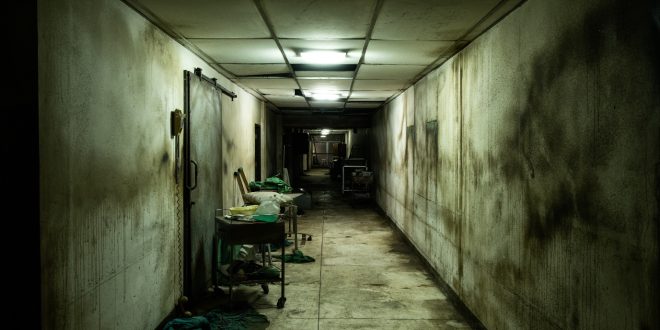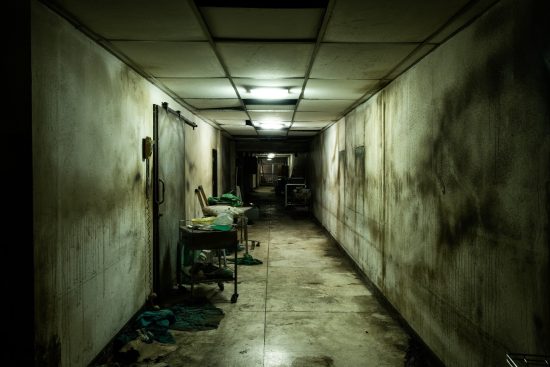In video games, horror is a genre that uniquely taps into our deepest fears and anxieties, creating an immersive experience that lingers long after the screen goes dark. Let’s explore the psychological aspects of horror games, unravelling how developers intricately weave narrative, atmosphere, and gameplay mechanics to evoke fear and anxiety in players.
With their immersive narratives, atmospheric designs, and strategic gameplay mechanics, horror video games serve as a unique medium that compels players to confront their deepest fears within a virtual environment. The deliberate manipulation of psychological elements, such as the fear of the unknown, isolation, and vulnerability, pushes players out of their comfort zones, creating an experience that resonates visceral. Much like the tense anticipation and adrenaline rushes induced by navigating the dark corridors of a haunted mansion or surviving encounters with otherworldly entities, horror games force players to grapple with their anxieties head-on. Interestingly, this immersive and confrontational approach finds a parallel in minimum deposit casinos. While horror games plunge players into a world of fear and suspense, online casinos offer an adrenaline-pumping experience through games of chance, encouraging individuals to face the excitement and uncertainty associated with risk-taking. Both genres, in their ways, tap into the human psyche, pushing boundaries and providing a cathartic outlet for the exploration of fear and thrill.
Storytelling as a Catalyst for Fear
- Establishing a Fearful Premise: Horror games often begin with a compelling narrative, setting the entire experience’s tone. Whether it’s a haunted mansion, a post-apocalyptic world, or a psychological thriller, the narrative serves as a foundation for fear.
- Player Immersion through Protagonist Identification: Developers craft protagonists with relatable qualities to enhance player immersion. When players identify with the character, their fears intertwine with the protagonist’s, intensifying emotional engagement.
- Building Suspense and Tension: The pacing of storytelling is crucial. Developers strategically implement twists, turns, and reveals to keep players on the edge of their seats, cultivating a sense of suspense that fuels fear.
- Ambiguous and Uncertain Endings: Leaving some narrative aspects open-ended or ambiguous can contribute to lingering fear. Players are often left pondering the unknown, allowing fear to extend beyond the confines of the game.
Visual and Auditory Elements
- The Power of Lighting and Shadows: Visual elements play a pivotal role in creating a foreboding atmosphere. Developers utilize lighting and shadows to obscure threats, fostering a constant sense of unease as players navigate dimly lit environments.
- Eerie Soundscapes and Music: The auditory dimension is equally crucial. Subtle whispers, creaking floorboards, and haunting melodies contribute to a pervasive sense of dread—well-crafted soundscapes immerse players in the game world, heightening anxiety.
- Visual Distortions and Surreal Imagery: Incorporating visual distortions, hallucinations, and surreal imagery can disorient players, blurring the lines between reality and nightmare. This deliberate distortion contributes to a psychological discomfort that intensifies fear.
- Environmental Design and World-building: Meticulous attention to ecological details creates a world that feels alive with its history and horrors. Dilapidated buildings, ominous symbols, and grotesque landscapes contribute to horror games’ atmospheric dread.
Player Agency and Vulnerability
- Limited Resources and Permadeath: Horror games often incorporate scarcity of resources and permadeath mechanics, emphasizing the player’s vulnerability. This scarcity forces strategic decision-making and heightens the fear of failure.
- Unpredictable Enemy Behavior: Developers leverage artificial intelligence to create enemies with erratic behavior. This unpredictability keeps players on their toes, uncertain when or where the next threat may emerge, intensifying fear.
- Isolation and Loneliness: Many horror games isolate players, reducing their support system and amplifying a sense of loneliness. This isolation enhances vulnerability, as players must confront fear without the reassurance of companionship.
- Puzzles and Challenges: Integrating challenging puzzles forces players to engage with the environment actively. Solving these puzzles under duress adds a layer of stress, as the fear of the unknown persists while players navigate complex scenarios.
In conclusion, the psychological aspects of horror games are a delicate dance between narrative, atmosphere, and gameplay mechanics. Developers masterfully manipulate these elements to evoke fear and anxiety in players, creating an experience that transcends the virtual realm. As technology advances, the potential for even more immersive and psychologically impactful horror games looms, promising to push the boundaries of fear in the gaming world. As players, we willingly step into these virtual nightmares, ready to confront our deepest fears and unravel the mysteries within the dark corridors of horror gaming.
Frequently Asked Questions (FAQ)
How do horror games tap into psychological fears?
Horror games tap into psychological fears by leveraging narrative elements that resonate with common human anxieties. The fear of the unknown, isolation, and the uncanny are often woven into the storyline. Additionally, atmospheric design, including lighting, sound, and visual distortions, amplifies the psychological impact, making players feel vulnerable and immersed in the game world.
Why is player identification with the protagonist important in horror games?
Player identification with the protagonist is crucial because it enhances emotional engagement. When players see themselves in the main character’s shoes, their fears become intertwined, creating a more immersive experience. This connection intensifies the emotional impact of the game’s narrative, making the horror more personal and visceral.
How do developers create a sense of suspense and tension in horror games?
Developers create suspense and tension through careful pacing of the narrative. Well-timed reveals, unexpected twists, and a constant sense of uncertainty contribute to keeping players on the edge of their seats. By strategically building and releasing tension, developers ensure a sustained atmosphere of fear throughout the gaming experience.
What role does player agency play in horror game design?
Player agency in horror games is designed to make players feel powerful and vulnerable. Limited resources, permadeath mechanics, unpredictable enemy behavior, and challenging puzzles force players to make strategic decisions, fostering a sense of vulnerability. Balancing agency with vulnerability enhances the psychological impact of the gameplay.
How do horror games utilize environmental design to create fear?
Environmental design is crucial in horror games, contributing to the overall atmosphere of fear. Dilapidated structures, ominous symbols, and grotesque landscapes are meticulously crafted to convey a sense of dread and unease. Attention to detail in the environment makes the game world feel alive with its history and horrors, adding to the psychological impact on players.
Are there different sub-genres within psychological horror games?
Yes, psychological horror games can encompass various sub-genres, such as survival, atmospheric, and cosmic horror. Each sub-genre focuses on different elements of psychological fear. Survival horror emphasizes resource management and vulnerability, atmospheric horror relies on immersive environments and mood, while cosmic horror delves into existential dread and the unknown.
Why do some horror games incorporate ambiguous or uncertain endings?
Ambiguous or uncertain endings often leave players with lingering questions and unresolved fear. By not providing clear resolutions, developers allow players’ imaginations to run wild, extending the psychological impact beyond the confines of the game. This ambiguity can contribute to a lasting and thought-provoking experience.
How does virtual reality (VR) technology enhance the psychological aspects of horror games?
Virtual reality enhances the psychological aspects of horror games by providing a more immersive and sensory experience. VR technology places players directly within the game environment, intensifying the impact of atmospheric elements, jump scares, and the overall feeling of dread. The heightened sense of presence in VR amplifies the psychological fear factor.
Can real-world fears and societal anxieties influence horror game experiences?
Absolutely. Developers often draw inspiration from real-world fears and societal anxieties to create themes that resonate with players. Whether it’s exploring existential fears, societal issues, or cultural taboos, horror games can serve as a reflection of society’s collective fears, making the experience more relatable and impactful.

